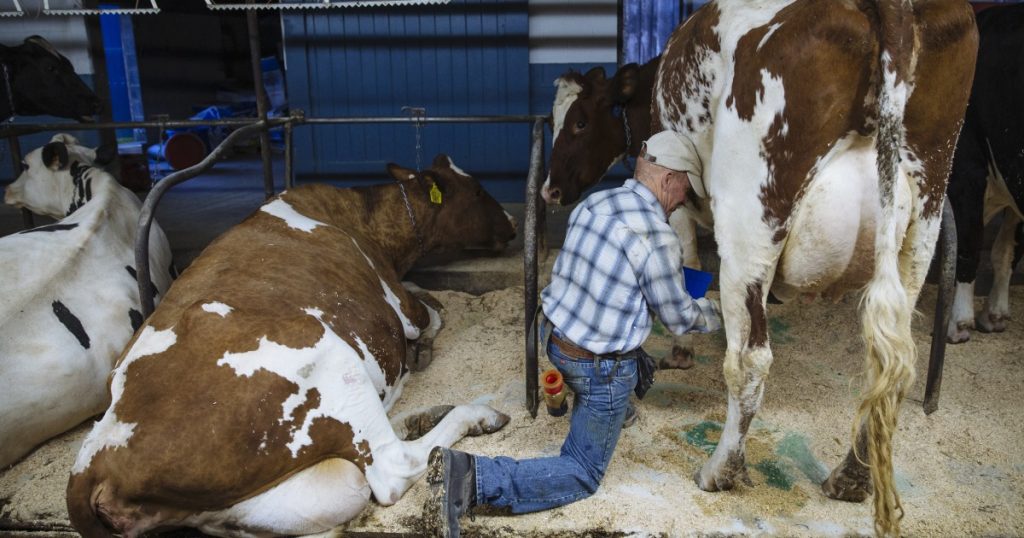Dr. Barb Petersen, a dairy veterinarian in Amarillo, Texas, identified the H5N1 bird flu strain as the cause of illness in cows in March. The sick cows produced abnormal milk and had mastitis. Dairy workers also showed flu-like symptoms such as high fever, chills, vomiting, and diarrhea. One dairy worker in Texas tested positive for H5N1, with conjunctivitis being the only symptom. At least 44 others were exposed, and some showed symptoms of cough, sore throat, fever, headache, and diarrhea.
Bird flu has been detected in 33 dairy herds across nine states. Dr. Keith Poulsen, from the Wisconsin Veterinary Diagnostic Laboratory, noted flu-like illnesses on affected dairy farms, though many cases may not have been documented. Some factors, such as the demanding nature of farming and fear of losing business, may prevent sick dairy workers from seeking medical care or reporting cases of H5N1 among cattle. There is a misconception that herds will be depopulated if the virus is detected, causing farmers to avoid testing.
It is still unclear how the bird flu virus spreads from cows to people, but potential paths include contact with milk, contaminated milking equipment, or respiratory droplets. The FDA announced that genetic traces of the virus were found in 1 in 5 pasteurized milk samples, but pasteurization effectively kills the virus. No live, infectious virus was detected in commercially sold milk or in powdered infant and toddler formulas. Experts recommend that those in contact with dairy cattle use protective equipment like safety glasses, aprons, and boots that can be sanitized.
Dr. Poulsen emphasized the importance of transparency regarding the virus to prevent its spread and mutation. The longer H5N1 is left unchecked, the more challenging it may become to control. There is urgency in identifying and containing the virus to protect farmworkers and prevent potential outbreaks. Jennifer Nuzzo, from Brown University School of Public Health, stressed the need to know the virus’s whereabouts to effectively safeguard individuals in contact with dairy cattle.
Farmers in rural areas face challenges in accessing medical care and taking sick days, which may contribute to underreporting of H5N1 cases. Misinformation and fear of losing livelihoods may also deter farmers from testing their herds for the virus. Health experts emphasize the importance of early detection, transparency, and proper protective measures to prevent the spread of H5N1 from cows to humans. Collaboration between farmers, veterinarians, health officials, and regulatory agencies is crucial in controlling and containing potential outbreaks of the bird flu virus within dairy farming communities.


